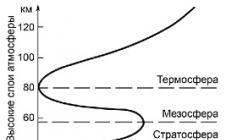"Art of the Northern Renaissance" - Town Hall in Antwerp. 1561-1564 Bosch embodied the world of demonic forces seeking to destroy a person. "Blind". Founder of the Northern Renaissance. Created famous engravings: "Apocalypse", Knight, Death and the Devil". Today we live, and tomorrow - who will predict? Friends, let's cheat death and drink for love!
"Renaissance Art in Italy" - Filippo Brunelleschi. The old and the new were in inseparable connection and confrontation. What did the humanists take as the basis of their principles? The main features of the art and culture of the Renaissance. Renaissance - "Renaissance") was Italy. Gioconda. Madonna and Child. Filippo Lippi. Heaviness and stability of forms.
"Renaissance lesson" - What are the features of the culture of the Renaissance? Page of an old book. Christmas. "The whole world is a theater, and the people in it are actors." Albrecht Durer. Utopia is a non-existent place. "Peasant painter" Pieter Brueghel the Elder Peasant dance. Leonardo da Vinci 1452-1519. Features of the culture of the Renaissance. The look, full of curiosity, shines.
"Renaissance Painting" - Early Renaissance. Northern Renaissance. Beginning of the Proto-Renaissance. trecento - 1300s. From Italian. cinquecento (five hundred). Prepared by: Mikhailova Maria Laskova Anastasia. Pieter Brueghel the Elder, The Blind, 1568, National Museum and Gallery of Capodimonte. From Italian. ducento (two hundred). High Renaissance. From Italian. quattrocento (four hundred).
"Brunelleschi" - Linear perspective. Gothic. Won the Brunelleschi competition. In 1434 all work was completed. Dome structure. Filippo Brunelleschi is an innovator in architecture and linear perspective. Experiment #2 Inside, the system consists of a double dome, and the outer one has a raised vault. It is noteworthy that Brunelleschi carved the sky.
"The Art of the High Renaissance" - Self-portrait. What are the similarities and differences in the work of the artists of the Italian and Northern Renaissance? Targets: Rafael Santi. Erasmus of Rotterdam. Rembrandt. The most famous was the Sistine Madonna. High Renaissance. High Renaissance in art Grade 7 New History. Mona Lisa (La Gioconda). engravings.
There are 30 presentations in total in the topic
Portal of ready-made presentations
slide 2
Durer (Durer) Albrecht (1471-1528), German painter, draftsman, engraver, art theorist. The founder of the art of the German Renaissance.
The son of a silversmith, Durer studied jewelry with his father, a native of Hungary, painting - in the workshop of the Nuremberg artist M. Wolgemuth (1486–1489), from whom he adopted the principles of the Dutch and German late Gothic art, got acquainted with the drawings and engravings of early Italian masters Renaissance (including A. Mantegna). In the same years, Dürer experienced a strong influence of M. Schongauer.
slide 3
In 1490-1494, during the journeys along the Rhine, which were obligatory for a guild apprentice, Dürer made several easel engravings in the spirit of late Gothic, illustrations for S. Brant's "Ship of Fools" and others.
Returning to Nuremberg in 1494, he married Agnes Frey and opened his own workshop. The impact on Dürer of humanistic teachings, which intensified as a result of his first trip to Italy (1494–1495), manifested itself in the artist’s desire to master the scientific methods of understanding the world, to an in-depth study of nature, in which his attention was attracted as the most seemingly insignificant phenomena ( “Grass bush”, 1503, Albertina collection, Vienna), as well as complex problems of the connection between color and the light-air environment in nature (“House by the Pond”, watercolor, circa 1495–1497, British museum, London).
slide 4
Dürer asserted a new Renaissance understanding of personality in portraits of this period (self-portrait, 1498, Prado).
The mood of the pre-reformation era, the eve of powerful social and religious battles, Dürer expressed in a series of woodcuts "Apocalypse" (1498), in artistic language which organically merged the techniques of German late Gothic and Italian Renaissance art.
The second trip to Italy (1505-1507) further strengthened Durer's desire for clarity of images, orderliness compositional constructions(“The Feast of the Rosary”, 1506, National Gallery, Prague; “Portrait of a Young Woman”, Museum of Art, Vienna), a careful study of the proportions of a naked human body (“Adam and Eve”, 1507, Prado, Madrid). At the same time, Dürer did not lose (especially in graphics) vigilance of observation, subjective expressiveness, vitality and expressiveness of images characteristic of late Gothic art (cycles of woodcuts “Great Passion”, circa 1497–1511, “Life of Mary”, circa 1502–1511, “Small Passion”, 1509-1511).
slide 5
Drawings
Dürer was equally gifted as a painter, engraver and draftsman; drawing and engraving occupy a large, sometimes even leading place in him.
The legacy of Dürer as a draftsman, numbering more than 900 sheets, can only be compared with the legacy of Leonardo da Vinci in its vastness and diversity. Drawing was, apparently, a part of the everyday life of the master. He brilliantly mastered all the graphic techniques then known - from a silver pin and a reed pen to an Italian pencil, charcoal, and watercolor. As for the masters of Italy, the drawing became for him the most important stage in the work on the composition, which includes sketches, studies of heads, arms, legs, draperies. This is a tool for studying characteristic types - peasants, elegant gentlemen, Nuremberg fashionistas. His famous watercolors "A Piece of Turf" and "The Hare" (Albertina, Vienna) are made with such intentness and cold detachment that they could illustrate scientific codes.
slide 6
The amazing accuracy of the graphic language, the finest development of light-air relations, the clarity of line and volume, the most complex philosophical underlying basis of the content distinguish three “masterful engravings” on copper: “The Horseman, Death and the Devil” (1513)
Slide 7
creative maturity. Painting 1494-1514
Dürer's first significant work is a series of landscapes (watercolor with gouache, 1494-95) made during a trip to Italy. These thoughtful, carefully balanced compositions with smoothly alternating spatial plans are the first "pure" landscapes in the history of European art. An even, clear mood, the desire for a harmonious balance of forms and rhythms determine the nature of Dürer's paintings of the late 15th century. - beginning of the 2nd decade of the 16th century
One of the main themes of Dürer's work in the 1500s. becomes a search ideal proportions human body, the secrets of which he is looking for, drawing nude male and female figures (Dürer was the first in Germany to turn to the study of the nude), summing them up in the copper engraving "Adam and Eve" (1504) and the large pictorial diptych of the same name (c. 1507, Prado). The years of Dürer's creative maturity include his most complex, harmoniously ordered multi-figured pictorial compositions - the “Feast of the Rosary” (1506, National Gallery, Prague) and “Adoration of St. Trinity” (1511, Kunsthistorisches Museum, Vienna). “The Feast of the Rosary” (more precisely, “The Feast of Rose Wreaths”) is one of the largest (161.5x192 cm) and the most major in terms of intonation painting work by Dürer; it is closest to Italian art not only in motives, but also in vitality, the fullness of images (mostly portraits), the full sound of colors, the breadth of writing, and the balance of the composition.
Slide 8
Portraits and self-portraits
The portrait occupies the most important place in Dürer's pictorial heritage. Already in the early portrait of Oswald Krehl (c. 1499, Alte Pinakothek, Munich), Dürer appears as an established master, brilliantly conveying the originality of the character, the internal energy of the model. The uniqueness of Dürer lies in the fact that a self-portrait occupies a leading place among his early portraits. The craving for self-knowledge, which led the hand of a 13-year-old boy (“Self-Portrait”, 1484, drawing with a silver pin, Albertina, Vienna) is further developed in the first three pictorial self-portraits ( 1493, Louvre; 1498, Prado; 1500, Alte Pinakothek, Munich), and in the last of them the master is depicted strictly in front, and his correct face, framed long hair and a small beard, reminiscent of the images of Christ the Pantocrator.
Slide 9
engravings
Dürer equally successfully worked in the field of woodcuts (wood engraving) and in the field of engraving on copper. Following Schongauer, he turned engraving into one of the leading art forms. In his engravings, the restless, restless spirit of his creative nature was expressed, which worried him about dramatic moral collisions. A sharp contrast to the early, calm and clear paintings was already his first large graphic series - 15 woodcuts on the themes of the Apocalypse (1498). In his engravings, Dürer, to a much greater extent than in paintings, relies on purely German traditions, manifested in the excessive expression of images, the intensity of sharp, angular movements, the rhythm of breaking folds, swift, swirling lines.
Slide 10
By this time, Dürer had won an honorary position in his native Nuremberg, gained fame abroad, especially in Italy and the Netherlands (where he traveled in 1520-1521)
Dürer was friends with the most prominent humanists in Europe. Among his customers were wealthy burghers, German princes and Emperor Maximilian I himself, for whom, among other major German artists, he performed pen drawings for a prayer book (1515). In a series of portraits of the 1520s (J. Muffel, 1526, , 1526, both in an art gallery, Berlin-Dahlem, etc.) Dürer recreated the type of a Renaissance man, imbued with a proud consciousness of the self-worth of his own personality, charged with intense spiritual energy and practical purposefulness.
An interesting self-portrait of Albrecht Dürer at the age of 26 in gloves. The hands of the model lying on the pedestal are a well-known technique for creating the illusion of closeness between the person being portrayed and the viewer.
slide 11
In 1514, Dürer became the court painter of Emperor Maximilian I. Working after 1514 at the court of Emperor Maximilian I, Dürer was loaded with official orders, the most time-consuming of which was the creation of a colossal, painted on 192 boards, painted lithograph "Maximilian I's Arch" (in work on it, apart from Dürer, a large group of artists participated)
The beginning of a new creative upsurge is associated with Dürer's trip to the Netherlands (1520-21), where, in addition to numerous sketches, he made a number of excellent graphic portraits ("Erasmus of Rotterdam", coal, 1520, Louvre; "Luke of Leiden", silver pencil, Museum Fine Arts, Lille; "Agnes Dürer", metal pencil, 1521, Engraving Cabinet, Berlin, etc.). In the 1520s the portrait becomes the leading genre in Dürer's work and in copper engraving.
slide 12
Dürer's merits
Dürer revolutionized Northern European art by combining the experience of the Netherlands and Italian painting. The versatility of aspirations was also manifested in Dürer's theoretical works (“A Guide to Measurement ...”, 1525; “Four Books on Human Proportions”, 1528). Dürer's artistic quest was completed by the painting "The Four Apostles" (1526, Alte Pinakothek, Munich), which embodies the four temperaments of people connected by a common humanistic ideal of independent thought, willpower, steadfastness in the struggle for justice and truth.
slide 13
Dürer made the first in Europe so-called magic square, depicted on his engraving "Melancholia" (see Albrecht Dürer's Square). Dürer's merit lies in the fact that he managed to enter numbers from 1 to 16 into the lined square in such a way that the sum 34 was obtained not only by adding numbers vertically, horizontally and diagonally, but also in all four quarters, in the central quadrangle and even when adding four corner cells. Dürer also managed to conclude in the table the year of creation of the engraving "Melancholia" (1514)
Slide 14
Slide 15
Self-portrait.
Drawing with a silver pencil
slide 16
Durer was born on May 21, 1471 in Nuremberg, in the family of a jeweler who came to this German city from Hungary in the middle of the 15th century. 8 children grew up in the family, of which the future artist was the third child and the second son. Father, Alberecht Dürer Sr., was a goldsmith, he literally translated his Hungarian surname Aitoshi into German as Türer; she subsequently began to be recorded as Dürer. Barbara Durer. Albrecht Dürer Sr.

At first, the father tried to captivate his son with jewelry, but he discovered in his son the talent of an artist. At the age of 15, Albrecht was sent to study at the workshop of the leading Nuremberg artist of the time, Michael Wohlgemuth. There Dürer mastered not only painting, but also engraving on wood and copper. Studying in 1490 traditionally ended with a four-year journey, the young man traveled to a number of cities in Germany, Switzerland and the Netherlands, continuing to improve in fine arts and processing of materials.


In 1494 Dürer returned to Nuremberg, soon after which he married. Then, in the same year, he made a trip to Italy, where he got acquainted with the work of Mantegna, Polayolo, Lorenzo di Credi and other masters. In 1495 Dürer returned to hometown and over the next ten years creates a significant part of his engravings, which have now become famous. Agnes Durer. Pen drawing. 1494

In 1520, the artist made a trip to the Netherlands, where he fell victim to an unknown illness, which then tormented him until the end of his life. IN last years life Albrecht Dürer pays much attention to the improvement of defensive fortifications, which was caused by the development of firearms. In his work "Guide to the fortification of cities, castles and gorges", released in 1527, Dürer describes, in particular, fundamentally new type fortifications, which he called Bastei.


About creativity Dürer made the first in Europe so-called magic square, depicted on his engraving "Melancholy". Dürer's merit lies in the fact that he managed to enter numbers from 1 to 16 into the drawn square in such a way that the sum 34 was obtained not only by adding numbers vertically, horizontally and diagonally, but also in all four quarters, in the central quadrangle and even when adding four corner cells. Dürer also managed to conclude in the table the year of creation of the engraving "Melancholy" (1514).

Dürer's "Magic Square" remains a complex mystery. If we consider the middle squares of the first vertical, it is striking that the numbers have been changed and corrected: 6 is corrected for 5, and 9 is obtained from 5. Undoubtedly, Dürer enriched his “magic square” with such details that cannot be overlooked.

Dürer's star and geographical maps In 1515, Dürer made three famous woodcuts depicting maps of the southern and northern hemispheres of the starry sky and the eastern hemisphere of the Earth. These works of art are at the same time the most valuable monuments of science. The work on the engravings was carried out in collaboration with prominent German scientists Johann Stabius (project initiator) and Konrad Heinfogel.


In the geographical map of Stabia - Heinfogel - Dürer, to convey the sphericity of the Earth, a perspective projection was used with a point of view located outside the globe at a distance of three times the diameter, from which the points of the earth's surface were projected onto the drawing plane. Dürer was already interested in the development of design methods as an artist. The map is, in addition, an undoubted example of the art of engraving. Along the edges of the map are masterful images of several winds blowing on Earth. Dürer's geographical map, also made in collaboration with I. Stabius and K. Heinfogel, depicts the "Old World" Europe, Asia and Africa, that is, the same areas that were mapped by Ptolemy. Dürer himself also took part in the long-term preparation of the publication of Ptolemy's Geography in Latin, which was led by W. Pirckheimer. Despite the traditional features, the map contains many new features that reflect the level of development of geographical knowledge in the Renaissance.

Durer was the first by German artist, who began to work simultaneously in both types of engraving on wood and on copper. He achieved extraordinary expressiveness in engraving on wood, reforming the traditional manner of working and using the methods of work that had developed in engraving on metal. In the years Durer created three graphic sheets that entered the history of art under the name "Master engravings": "Knight, death and the devil", "Saint Jerome in the cell" and "Melancholy".


About 970 drawings by Durer have survived: landscapes, portraits, sketches of people, animals and plants. Dürer tirelessly exercised in layout, generalization of particulars, construction of space. Dürer's graphic heritage is distinguished by high craftsmanship, observation, fidelity to nature. He used his studies in engravings and paintings, repeatedly repeated the motifs of graphic works in large works. Hare, 1502





